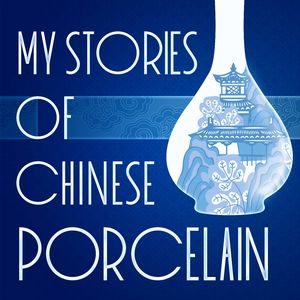
 Episode 8: Challenges for Chinese porcelain
Episode 8: Challenges for Chinese porcelainDespite China inventing porcelain and dominating worldwide production and trade for centuries, from the 19th century, due to the Western world's industrialization, the entire Chinese porcelain industry lagged far behind.
 Episode 7: The 72 processes of making porcelain
Episode 7: The 72 processes of making porcelainTraditionally, there are 72 steps involved in the making of one Chinese porcelain piece. Other traditional crafts, like weaving, blacksmithing or carpentry, usually take place in a small workshop with simple procedures. Why does porcelain making require so many processes?
 Episode 6: The rise of European porcelain producers
Episode 6: The rise of European porcelain producersEven though porcelain originated in China, only a few commercial brands were created there. Despite being 1,000 years behind, the European porcelain industry was soon developing its own porcelain brands. What happened?
 Episode 5: Imari ware and a story lost in the mists of time
Episode 5: Imari ware and a story lost in the mists of timeImari is a style of porcelain named after the Japanese port from which it was shipped to the West. At around the same period, the Chinese porcelain industry suddenly reached its peak and lost its glamorous appeal in the world market, replaced by this new Japanese porcelain.
 Episode 4: Kraak ware and its European influence
Episode 4: Kraak ware and its European influenceKraak ware has been popular in Europe for hundreds of years. However, it was not made in Europe but in China. To find out why this chinaware has a fancy Western name and how it looks, let's travel back in time to the Netherlands in 1602.
 Episode 3: The story of blue and white porcelain
Episode 3: The story of blue and white porcelainIn Chinese pop singer Jay Chou's famous song "Blue and White Porcelain", he mistakenly suggests that the colors are a "light sky blue". In this episode, we find the truth about blue and white porcelain, as well as how it became a global obsession.
 Episode 2: Chinese porcelain: a history of thousands of years
Episode 2: Chinese porcelain: a history of thousands of yearsJingdezhen is known as China's porcelain capital because it has been producing Chinese ceramics for more than 1,000 years. How did the small town get its name and why is porcelain called 'china' across the world?
 Episode 1: A story told from porcelain fragments
Episode 1: A story told from porcelain fragmentsOne day in June 2005, Chinese fishermen found several pieces of ancient porcelain while out working on their boat. What information was found from these porcelain fragments and why are they considered by experts to be "living fossils" that have recorded histories and stories?
 4202
4202 15
15